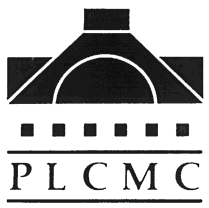Strategies for Moving from Today to Tomorrow

In its transition from traditional to new technology, library staff describe the stance of the PLCMC as “stepping over a stream,” with one foot placed firmly on each bank, representing the new and traditional. However, the library is experiencing tension between old and new, between books and computers.
Partnerships with local businesses and community organizations, while providing the impetus for change and expansion, also raise user expectations as well as the visibility of new services. The community attracts those who embrace new technologies. In this environment, the library is able to move quickly and effectively to take advantage of opportunities for new funding and the availability of volunteers to meet its community’s information needs. However, the pace and level of change necessarily limit the ability to develop solid, long-term goals. As technology and the PLCMC evolve over the next year or two, elements of the institution’s five-year plan may change substantially.
The PLCMC system has been a front-runner in the use of technology and did not wait for state support to move ahead with technological innovations. It has since augmented its own programs by being the first public library system in the state to become part of the North Carolina Information Highway, a state-sponsored interactive network. A newly renovated and technologically equipped auditorium in the library’s main building has been outfitted recently to handle the interactive programs of the NCIH. But long before the inception of the NCIH, PLCMC was implementing its own plans for increasing public access to electronic information.
At the heart of PLCMC’s innovative endeavors is the support it receives from businesses and the community. That support, however, does not come without costs. Despite business and community support for introducing new technology, there are real concerns about technology start-up costs and the licensing fees for network use of software. Acquisitions budgets must be planned carefully to strike an appropriate balance between books and software to meet the needs of all types of users. Technology, in other words, costs money, and the PLCMC’s ambitious plans face the ever-present challenge of funding.
The cost comes not only in dollars. For all its innovation and high standards of service, PLCMC has had to contend with the strain that is created by the introduction of technology into the context of traditional library services. There is great community concern that print materials not be replaced by digital information. An autonomous Board of Trustees helps assure patrons that traditional services will not be forsaken; at the same time, the board’s independence allows it to exert pressure as necessary to bring about technological innovation. The library leadership expresses its intention to make a “graceful transition into technology.” Yet the fear among many residents–even in Charlotte with its high-tech, information-rich business climate–is that the print world will be neglected. As the library puts greater emphasis on technology and receives more funds to support electronic expansion and development, it becomes increasingly difficult to support other library operations.
Change is a hallmark of operations at the PLCMC, whether or not new technologies are involved. The library’s management encourages tactics such as challenging the status quo, encouraging action, and downplaying the importance of the routine in favor of innovation. It is important, the director believes, to “always be offering something new.” In that kind of environment, it is difficult to provide the necessary checks and balances that would help make expansion and new ideas more deliberate and targeted. It also is difficult to integrate the best from past experience into the new environment.
The library sponsors numerous special events and offers many services, with more added each year. The five-year plan notes that the library “will ‘reach out’ to new customers and provide new services to reach those customers.” Much of the progress occurs in an “experimental” management mode that encourages risk-taking. An overriding and explicitly stated value is to concentrate on moving forward with varieties of new projects, products, and services, while finding “some way” of maintaining ongoing activities. As one staff member explains, “At least 50 percent of my job is working with users on new services; somehow, we just have to find time to do the rest.” It is not entirely clear, however, where that time will come from. The desire to create an environment that tolerates mistakes, especially when those errors become building blocks of learning for later successes, sparks creative change, but may lead, inadvertently, to carelessness. In addition, leaders are aware that risk-taking jeopardizes the stability of ongoing services–those day-to-day activities that make up any library’s routine and, to a certain extent, are its raison d’etre.

